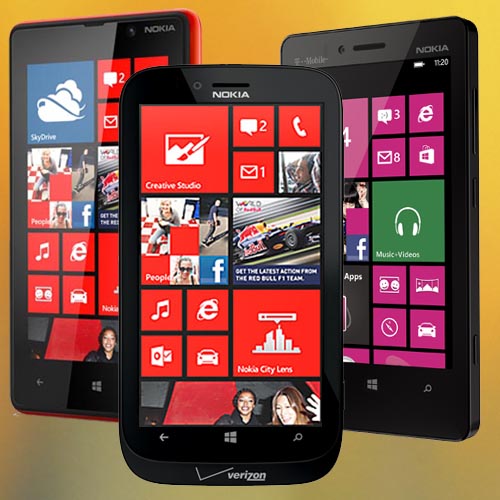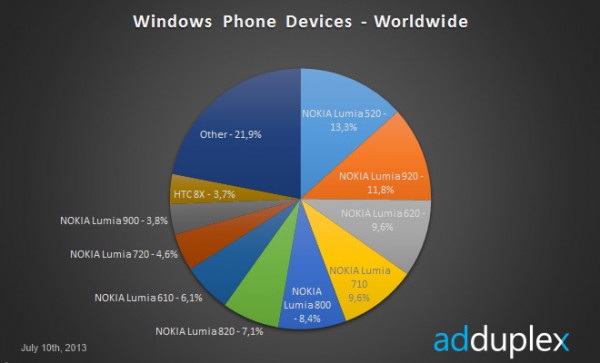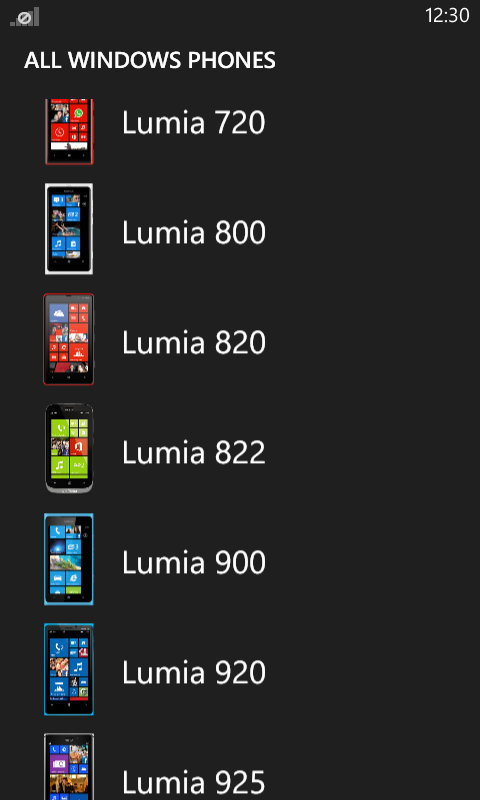MNB RG: The Lost Lumia
Derrek Leigh writes about the Lumia portfolio and how devices are getting lost in the mix as new members of the family are introduced. A prime example being his Nokia Lumia 810.
______
With the recent release of Nokia’s PureView powerhouse, the Lumia 1020, the 920 is practically near obsolete. Even the recently released T-Mobile Lumia 925 is to be completely shadowed by the enormous camera bulge that protrudes the new hero device. There’s no doubt, though, that apart from the PureView equipped smartphones, each Lumia device has gotten it’s fair share of attention. The 520 with it’s amazingly low price, 620 with it’s unique double-shot color scheme, the 625 with it’s larger-than-Lumia 4.7†screen, the 720 with it’s thin body and great low-light camera for a mid-range device, the 820 with its launch having coincided with the 920, and the 822 as the first Nokia smartphone to be carried by Verizon Wireless. But there’s a phone that everyone as seemed to have forgotten about. The Lumia 810.

Announced closely after the launch of the 920 and 820, the Lumia 810 was a variant of the latter and the first Windows Phone 8 device from Nokia to arrive at T-Mobile US, and the 3rd device from Nokia to run the new platform. With that sort of presence, one would think that both companies would put some effort into marketing the device. That would prove untrue, as the Lumia 810 was given a weak announcement behind the hero device.
Interestingly, the second 820 variant, the Lumia 822, was given a much louder announcement roughly 3 weeks later. This was probably due to the fact that Verizon had not carried a Nokia device in many years, and also that it was and is currently the largest US carrier in both users and coverage. It’s no surprise that it got a lot of attention, and it was definitely deserved. But the 810 was just as capable, apart from the fact that it didn’t include 4GLTE (more on this later). They both offer 4.3inch WVGA Clearblack AMOLED displays, dual-core Snapdragon processors, 8MP cameras with lenses from Carl Zeiss (now just Zeiss), the usual slew of connectivity options such as Bluetooth, USB, WiFi and NFC, and T-Mobile’s 4G HSPA+ offered pleasing network speeds. Wireless charging was also available provided you purchase a supported back cover (more on this as well).
I was personally excited for the Lumia 810, because I owned the 710 at the time and yearned for the next Windows Phone experience. The 710 proved to be a popular device, too, having been the 3rd highest selling phone on T-Mobile’s network for a while. That’s what makes the lack of promotion for the 810 even more confusing. Wouldn’t both companies want to bank in on the growing popularity of the Lumia line by actually marketing the 710 successor? It’s still included on many reports as one of the top selling Lumia devices, even now that Windows Phone 8 has seemingly rained on its parade. So why the cold shoulder?

Months later, I finally purchased the Lumia 810. It was the beginning of March, and little did I know that the following month, the device would be discontinued. I immediately began looking for accessories for my new Lumia. I wanted to take advantage of the wireless charging capabilities. I would search and search, but the wireless charging cover for the Lumia 810 was nowhere to be found, not even on Nokia’s own site. I was quite confused at this… especially since it was about a few weeks until I could find it on T-Mobile’s site. It was around this time that rumors were staring to emerge that the Lumia 810 would be among the first few phones to access T-Mobile’s 4G LTE network via a software update. This got my hopes up, but only for a short period. By April 1st, it was reported that this rumor would only prove false. Good one, Nokia. This would only confuse me later due to the fact that both companies were developing the LTE-capable Lumia 925 together around the same time as the Lumia 920, so Nokia must have known that T-Mobile’s LTE network would be available soon. So why not include it? To further throw me into a frenzy of disappointment, I would constantly hear about updates being pushed out to the other Lumia devices, but as many times as I would check for updates, none came. I couldn’t get 4G LTE. I couldn’t get the Storage Check app that so many were taking advantage of. I couldn’t get WiFi calling, a feature that came pre-installed on the low-cost mid-range Lumia 520. I was starting to feel left out.

On that note, I was realizing that not only were the two companies behind the phone blatantly ignoring it, but everyone else was too. Blog posts, polls, support pages, apps, etc. were all leaving out the Lumia 810. The photo above is a screenshot from the Insider app from the Windows Phone store. The list of Lumia devices is shown in numerical order. Notice anything missing? It’s become clear to me that once the 520 stepped in, the focus completely shifted to the platform’s new price point. By this time, the 810 was only available in refurbished models, and now it’s no longer mentioned on T-Mobile’s site.
According to reports from WPCentral (http://www.wpcentral.com/t-mobile-us-htc-8x-receive-gdr2-update-july-22nd), T-MobileUS is currently undergoing tests with the Lumia 810 to bring GDR2. Unfortunately, that doesn’t necessarily mean it’s coming, “because there’s a difference between testing a software update for a phone and actually signing off on it for distribution.†Still, it caught me by surprise that the 810 was even being considered! Many Samsung Ativ and HTC8X/S users all around are reputedly receiving the update, with T-Mobile supposedly giving the nod for the 8X to have already received the update on July 22nd (I’ve yet to confirm this occured) and no word or confirmation for the Lumia. Let’s hope this update comes, along with Nokia Amber, to put a little life back into the lives of the lost Lumia 810 users!
As a proud owner of the Nokia Lumia 810, I have been met with nothing but a transparent disregard for any kind of support. The phone’s initial pricing of 150 USD on a two-year agreement should have been a tip, as it was prices higher as a mid-range device than Nokia’s own high-end Lumias. I’ve been a long-time T-Mobile customer, and given T-mobile’s track record with crippling just about any Nokia device that comes through (5610, Nuron, Astound, Lumia 710), I should have expected no less with this device. I can only hope that they get it right with the Lumia 925. So far, I don’t think I should have any reason to worry, as they’ve managed to pack the technology of the 920 into a slimmer, more attractive body. All that’s left to do is wait for any marketing attempts to determine if T-Mobile and Nokia are serious about this phone. AT&T’s Lumia 1020 is, after all, Nokia’s current crown jewel, so it’s up to the Magenta carrier to aggressively push the phone out to consumers.
Category: Nokia





Connect
Connect with us on the following social media platforms.